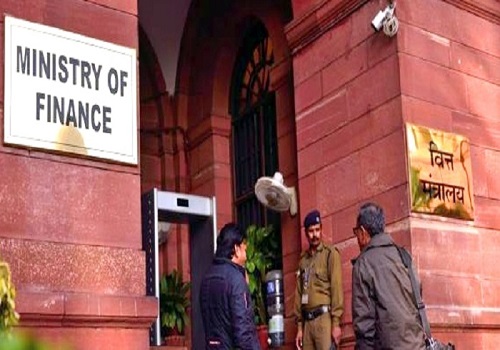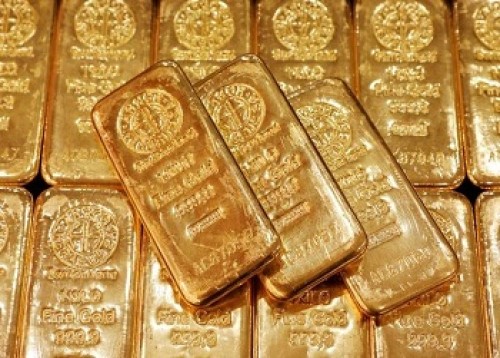Monthly Gold Outlook : October 2021 by Chirag Mehta, Quantum Mutual Fund

Follow us Now on Telegram ! Get daily 10 - 12 important updates on Business, Finance and Investment. Join our Telegram Channel
Below are Views On Monthly Gold Outlook – October 2021 by Mr. Chirag Mehta, Sr. Fund Manager-Alternative Investments, Quantum Mutual Fund.
Gold prices moved lower in September as the dollar strengthened on the back of a hawkish Fed. Rising US Treasury bond yields put further downward pressure on gold. International gold prices settled ~3% lower, slightly above $1750 per ounce. With the Indian rupee depreciating in the month, INR gold prices ended ~1.5% lower.
After months of mixed messaging, amid a Delta variant led Covid-19 resurgence, Chair Powell sounded hawkish in the Federal Reserve's latest policy statement in September. Looking past the stall in hiring in August, Powell was optimistic about the GDP growth and progress in the labour market. He signaled that the bar for tapering of the pandemic-related stimulus support for the American economy, which had been in place since the pandemic’s outbreak in March 2020, could be met as soon as the next meeting in November. Which, for now, isn't encouraging for gold which has thrived due to the globally easy monetary policies. The US bond yields and the dollar, on the other hand, are seen getting support from the move towards policy normalization. The only thing comforting gold investors now is that the tapering will be gradual.
With half of the FOMC members forecasting the first hike in interest rate happening by the end of next year, it seems that interest rates, which have been anchored near zero over the past 18 months, could move up sooner than expected to tackle rising inflation. On the positive side, Powell assured markets that there would be no interest rate hikes while the Fed is tapering. With inflation currently elevated, that would mean real interest rates should stay low till the end of 2022, providing support to gold.
Despite the optimism that the global economic recovery continues to progress, higher inflation and dissipating growth are still risks to the outlook.
While strong monetary and fiscal stimulus measures have helped support consumer demand, supply-side constraints are now adversely impacting economic activity. Much of Europe is grappling with a rise in electricity and natural gas prices triggered by an increase in demand as economies opened up and lower inventories. That has hurt consumer sentiment. A power supply shortage in China is resulting in an industrial contraction and depressing the economic outlook. Amidst waning monetary support, the global economy is staring at stagflation if rising energy prices augment inflation and slow down the economic recovery
While inflation fueled by surging energy prices and supply chain disruptions might cool down, developments in the US labour market suggest inflation might prove to be more longer lasting than transitory as anticipated. Unemployment rates are still high compared to pre-pandemic numbers, and so are job openings, possibly meaning that workers are expecting higher pay, and this might systematically pump wages up. The August payrolls report showed a much smaller increase in jobs than expected and a pick-up in wages.
Potential impacts of drying up of cheap liquidity came to the fore with a debt crisis at major Chinese property group Evergrande, sparking concerns about spillover risks in the world’s second-largest economy. The vitality of corporate earnings, propelled more by lower factor costs than higher revenues too will be under pressure as interest rates and inflation inch up. This could result in stock market volatility.
While the unwinding of monetary stimulus may not trigger a taper tantrum this time, this is a tricky time to be changing policy direction. Proceed too fast and growth may be set back or, worse, policymakers have to take a U-turn. Go too slow and risk higher inflation. In the former case of central banks retreating to easier policy, gold will return to strengthening. In the latter, inflationary pressures will keep gold relevant.
Even with monetary policy in the US now set to moderate, fiscal policy will continue to be accommodative under President Biden. In addition to the recently passed $1 trillion infrastructure bill, the government is working to get a complementary $3.5 trillion spending plan approved. This could cap the dollar’s strength and keep gold supported.
In relation, the rubber stamp exercise of raising the US debt ceiling has the potential to spark political and economic uncertainty this time given the high levels of public debt. If the ceiling is not increased in time, the US government could have problems making interest payments and would have to default on its bonds. Concerns about the sustainability of Uncle Sam's ballooning indebtedness could disrupt markets and be negative for the dollar and positive for gold.
The transition from one phase of the monetary policy cycle to the next by the Federal Reserve will be the main driver of global markets for a few months. Markets will settle down after they digest the changes and revalue assets accordingly. Gold’s bread and butter has been the ultra-accommodative monetary stance of the Fed and that is starting to normalize, which will cap its upside. But over the next couple of quarters, its utility as a portfolio risk diversifier and an asset that tends to keep up with inflation could come to the fore, limiting the downside. Gold will thus remain range-bound over the near to medium term unless we see some macroeconomic risks materialize nudging the Fed to rethink policy normalization.
To Read Complete Report & Disclaimer Click Here
Above views are of the author and not of the website kindly read disclaimer










Top News

In a first, India exports pomegranates by sea to USA



Tag News

Navigating the Markets changing landscape -Quantum Mutual Fund holds Path to Partnership for...









